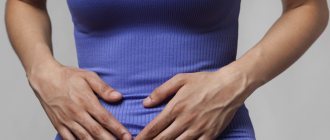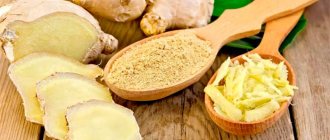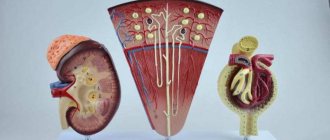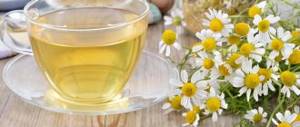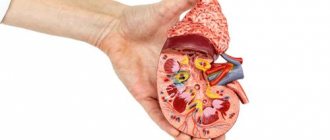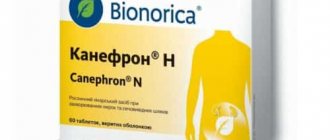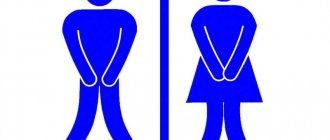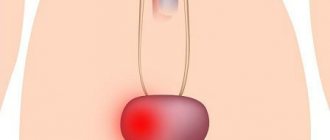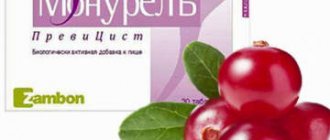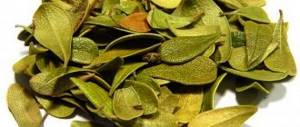Nolicin is a drug that belongs to the category of fluoroquinolones. It has an antimicrobial effect and is very effective for treating pathologies of the genitourinary system. The medicine also resists infection, which provokes the manifestation and progression of sexually transmitted diseases, disruption of the kidneys and urinary system. But you need to figure out exactly whether Nolitsin is an antibiotic or not.
Composition of the drug
The active ingredient of Nolicin tablets for cystitis is norfloxacin (NF), each containing 400 mg of the active ingredient. Acquired resistance to NF in clinical strains of bacteria develops relatively slowly, which is important when choosing this drug for the treatment of urinary tract diseases of an infectious nature.
The bactericidal and bacteriostatic activity of NF against a large number of microorganisms has been studied on tens of thousands of strains. The antibiotic quickly penetrates the microbial cell and is well tolerated when administered orally. It also remains highly effective against multiresistant strains of bacteria.
Description of the medication
The drug "Nolitsin" is available in tablet form. Pills are packed in a contour cell of 10 pieces. In one pack you can purchase 10 or 20 tablets. Externally, the packaging does not have any remarkable features. However, in the corner of the pack you can always find a green island indicating the dosage.
The medication is usually available in 400 milligrams of active ingredient per tablet. The drug always contains instructions for use. It must be carefully studied before use. The cost of the medicine depends on the number of blisters in the pack. If you purchase the drug in the amount of 10 tablets, it will cost about 200 rubles. Capsules in the amount of 20 pieces will cost you approximately 360 rubles. As you can see, purchasing a larger package is somewhat more profitable.
How the drug works
This AMP belongs to the group of fluoroquinolones. It has a wide spectrum of action, is effective in the treatment of infectious and inflammatory diseases of the urinary tract, and has a bactericidal effect. Prevents the proliferation of bacteria, inhibits DNA gyrase and protein synthesis, thereby causing the death of microorganisms.
- Highly effective against most gram-negative microorganisms (Escherichia coli, Shigella, Salmonella, Proteus, etc.).
- Acts on some gram-positive microorganisms (staphylococci, enterococci).
- Anaerobic bacteria and streptococci are insensitive to the drug.
NF is relatively well absorbed when taken orally, the relative bioavailability is 30–40%. It begins to act quickly, reaching maximum concentrations in the blood after 1–3 hours. The highest concentrations are observed in the urinary tract, intestines, and prostate gland.
According to the results of a systematic review conducted by Doctor of Medical Sciences V.V. Rafalsky to determine the level of safety of antibacterial fluoroquinolones in the treatment of acute uncomplicated cystitis, norfloxacin is one of the safest.
Dosage, use in the treatment of cystitis
Considering that food intake can affect the absorption of the drug, the antibiotic should be taken 2 hours after or 1 hour before meals.
- Acute uncomplicated form of cystitis: drink 2 times a day, 1 tablet. Course duration is 3–5 days.
- Chronic urinary tract infections: 2 times a day, 1 tablet. Course duration: up to 4 weeks. In case of relapse, take 1 tablet every day, the course can last up to 12 weeks.
To evaluate the effectiveness of NF with different dosage regimens, a study was conducted with the participation of 86 women. The patients were diagnosed with uncomplicated urinary tract infections.
The drug was prescribed in a course of 7–10 days, but one group took NF 800 mg per day once, the second group took 400 mg 2 times a day. There were no differences in the bacteriological and clinical efficacy of norfloxacin.
Important! The information in this section should not be used to self-prescribe medication.
The advisability of taking Nolitsin for the treatment of cystitis, the regimen, how to take Nolitsin for cystitis and how long the course of therapy should last can only be determined by a doctor.
Nolicin tablets summary (instructions for use) in photographs
Photo of instructions for use of nolitsin tablets, part 1
Photo of instructions for use of nolitsin tablets, part 2
Photo of instructions for use of nolitsin tablets, part 3
Photo of instructions for use of nolitsin tablets, part 4
Photo of instructions for use of nolitsin tablets, part 5
Photo of instructions for use of nolitsin tablets, part 6
Photo of instructions for use of nolitsin tablets, part 7
Photo of instructions for use of nolitsin tablets, part 8
Photo of instructions for use of nolitsin tablets, part 9
Photo of instructions for use of nolitsin tablets, part 10
Efficacy in the treatment of acute cystitis
To study the effectiveness of the active ingredient of the drug (norfloxacin) for cystitis in women in Russia, a study was conducted in 5 cities of the country. The study was conducted in an outpatient setting with the participation of 219 women who had symptoms of acute cystitis. Each woman was prescribed a dosage of 1 NF tablet 2 times a day, the course was a week.
Results:
- Positive feedback appeared already on the 3rd day - urinary problems disappeared in half of the patients. After a week of therapy, only 6% of women complained of problems with urination; 3-4 days after the end of treatment, the process of urination returned to normal in all study participants.
- Bacteriuria was noted in only 1% of patients already on days 3–5 of treatment.
- Following the entire course of therapy, 85% of women recovered. Significant improvement was noted in 13% of patients, and only in 2% of cases the bacteria were insensitive to NF.
AMP Nolitsin is highly active against pathogens that cause acute uncomplicated cystitis. According to patient reviews, it is well tolerated. The drug quickly relieves the symptoms of the disease, with a sufficient dosage and duration of treatment, it destroys bacteria, and therefore it can be argued that Nolitsin helps with acute cystitis.
Efficacy in the treatment of chronic cystitis
To evaluate the effectiveness of AMPs in the treatment of chronic cystitis, a study was conducted with the participation of 85 women. The patients were divided into two groups:
- main group: 45 young women who are sexually active and have a history of up to 5 cases of acute cystitis. They needed to drink NF in a standard dosage. The course of therapy is a week,
- control group: 40 older women, post- and premenopausal. History: up to 18 episodes of cystitis. An alternative antibacterial drug was prescribed for a course of 10 days.
All patients underwent examination. The main complaint of women was frequent urination with painful sensations; every third had terminal hematuria. Also, more than 90% of patients had nonspecific microflora with a degree of bacteriuria of at least 104 CFU/ml.
The effectiveness of therapy was assessed by sanitation of urine, cessation of bacteriuria, and feedback from women about the disappearance of symptoms was taken into account. Control tests were carried out every week for 1 month. Some patients were followed up for 3–9 months.
Results of the study:
- A one-week course of NF therapy led to eradication of the pathogen in 95.2% of women in the main group. On the 14th day of the study, microflora growth stopped in all patients.
- Many women noted the elimination of symptoms of the disease in the first days.
- During the observation period (up to 9 months), not a single recurrence of cystitis was detected; patient reviews were positive.
- In no case did microorganisms develop resistance to NF during the treatment period.
- The drug was well tolerated.
Based on the data presented, we can conclude that norfloxacin (the active component of Nolicin) is an effective antimicrobial agent in the treatment of chronic cystitis. The drug is well tolerated by patients, promotes the rapid disappearance of symptoms of the disease and destroys pathogenic bacteria.
Also, based on the results of the study, it can be argued that the risk of recurrence of cystitis after NF therapy is minimal, and microorganisms remain sensitive to it.
Doctors' opinions on the antibiotic based on norfloxacin
Experts say that you cannot use the drug “Nolitsin” and “Amiodarone” at the same time. Interactions of this nature can lead to unpleasant symptoms. It is also not recommended to combine iron-based drugs and the product in question. When supplementing therapy with other antibiotics, you need to monitor blood counts using laboratory diagnostics.
Doctors say that the medicine is very effective in treating cystitis. But only if it has not been used before. If used incorrectly or on its own, the medication can cause bacterial resistance. In this situation, the pills will simply be useless. Doctors strongly recommend that you consult a doctor at the first symptoms of cystitis. After all, only in this case there is a possibility of a quick and complete cure. If you delay correction, the inflammation may become chronic. It is very difficult to cure such a pathology, and sometimes it is simply impossible.
Contraindications for use
The instructions contain the following list of contraindications for taking AMPs: age under 18 years, hypersensitivity to the active substance, pregnancy or breastfeeding, hypersensitivity to other fluoroquinolones.
In pregnant women, this antibiotic is used only for health reasons; strict medical supervision is required during therapy. If it is necessary to prescribe AMPs during lactation, breastfeeding should be discontinued. Nolitsin is not prescribed to children for cystitis.
Side effects
If any of the side effects listed below occur, you should report them to your doctor. Also inform your doctor if any other undesirable reactions of the body occur that are not listed in this list:
- drowsiness, dizziness, feeling tired, headache,
- restlessness, anxiety, depression, ringing in the ears, fear, hallucinations, irritability,
- diarrhea, heartburn, stool disorders, nausea, vomiting,
- itching, rash, urticaria, photosensitivity, anaphylactic shock,
- increase in plasma creatinine level.
Important! Therapy should be discontinued if the first signs of tenosynovitis appear and pain in the tendons occurs. If the dose of Nolitsin is accidentally exceeded, you need to do a gastric lavage and consult a doctor.
If you do not do this, then undesirable reactions of the body may occur - diarrhea, nausea, cramps, vomiting, cold sweat, sleep disturbances. You may need to be monitored by a specialist for several days, depending on how severe the overdose is.
Overdose
Before starting treatment, a woman should carefully study the instructions for use in order to know exactly how to take the medicine and in what dosage. This way she will be able to eliminate undesirable consequences if the permissible amount of the drug is exceeded.
In case of overdose, the following symptoms may occur:
- dyspeptic disorders, accompanied by pain in the abdominal region, nausea, vomiting and loose stools;
- disturbance of spatial orientation, lethargy, reduced level of motivation and any activity;
- trembling in the body, severe weakness, cold sticky sweat;
- paroxysmal, involuntary contraction of muscles as a result of their overstrain;
- swelling of the cheeks and neck, puffiness of the eyelids, deterioration of complexion.
Treatment involves gastric lavage, as well as a detoxification method, which is based on the accelerated removal of toxins from the body by increasing the volume of urine produced. Further therapy is carried out based on symptoms. Such patients are recommended to be observed in the hospital for several days. There is no specific antidote for norfloxacin.
special instructions
- While taking the tablets, the manufacturer recommends avoiding prolonged exposure to direct sunlight and increased physical activity.
- Liquid dairy products affect the absorption of the drug; they should be consumed no earlier than 2 hours or no later than 1 hour before taking the tablets. Also, the intensity of absorption of the active substance is reduced by zinc, iron, and antacid preparations. The interval between taking these medications and AMPs should be at least 2 hours. Also drink at least 1.5 liters of water during treatment; a special diet for cystitis is also recommended.
- Drivers and people who operate machinery need to be careful when taking pills, as there is a risk of dizziness and other side effects that can affect the speed of reactions and concentration.
- If you were prescribed this antibiotic, but you replaced it with an analogue, and it does not help, consult your doctor.
In urological practice, Nolitsin is widely used, this is due to its high effectiveness against pathogens of urinary infections and good tolerability, as evidenced by patient reviews.
It is recommended for use in the treatment of cystitis of all forms; a low level of resistance of microorganisms to this AMP is noted.
Nolitsin also has an important cost advantage over comparator drugs. The price of this antibacterial agent is from 150 to 190 rubles per pack of 10 tablets, from 300 to 380 rubles per pack of 20 tablets.
Drug interactions
When using norfloxacin and theophylline simultaneously, the concentration of theophylline in the blood plasma should be monitored and its dose adjusted, because norfloxacin reduces the clearance of theophylline by 25%, and the development of corresponding undesirable side effects may occur.
Norfloxacin reduces the effect of nitrofurans.
Norfloxacin may enhance the therapeutic effect of cyclosporine and warfarin; in some cases, when using norfloxacin with cyclosporine, an increase in serum creatinine concentration was observed, therefore, monitoring of this indicator is necessary in such patients.
The simultaneous use of norfloxacin and antacids containing aluminum or magnesium hydroxide, as well as drugs containing iron, zinc, sucralfate, reduces the absorption of norfloxacin (the interval between their administration should be at least 2 hours).
Concomitant use with drugs that lower the seizure threshold can lead to the development of epileptiform seizures.
Concomitant use with GCS may increase the risk of tendonitis or tendon rupture.
Norfloxacin may enhance the therapeutic effect of hypoglycemic drugs (sulfonylurea derivatives).
Concomitant use of norfloxacin with drugs that have the potential to lower blood pressure can cause a sharp decrease in blood pressure. In this regard, in such cases, as well as when administered simultaneously with barbiturates and other drugs for general anesthesia, heart rate, blood pressure and ECG readings should be monitored.
